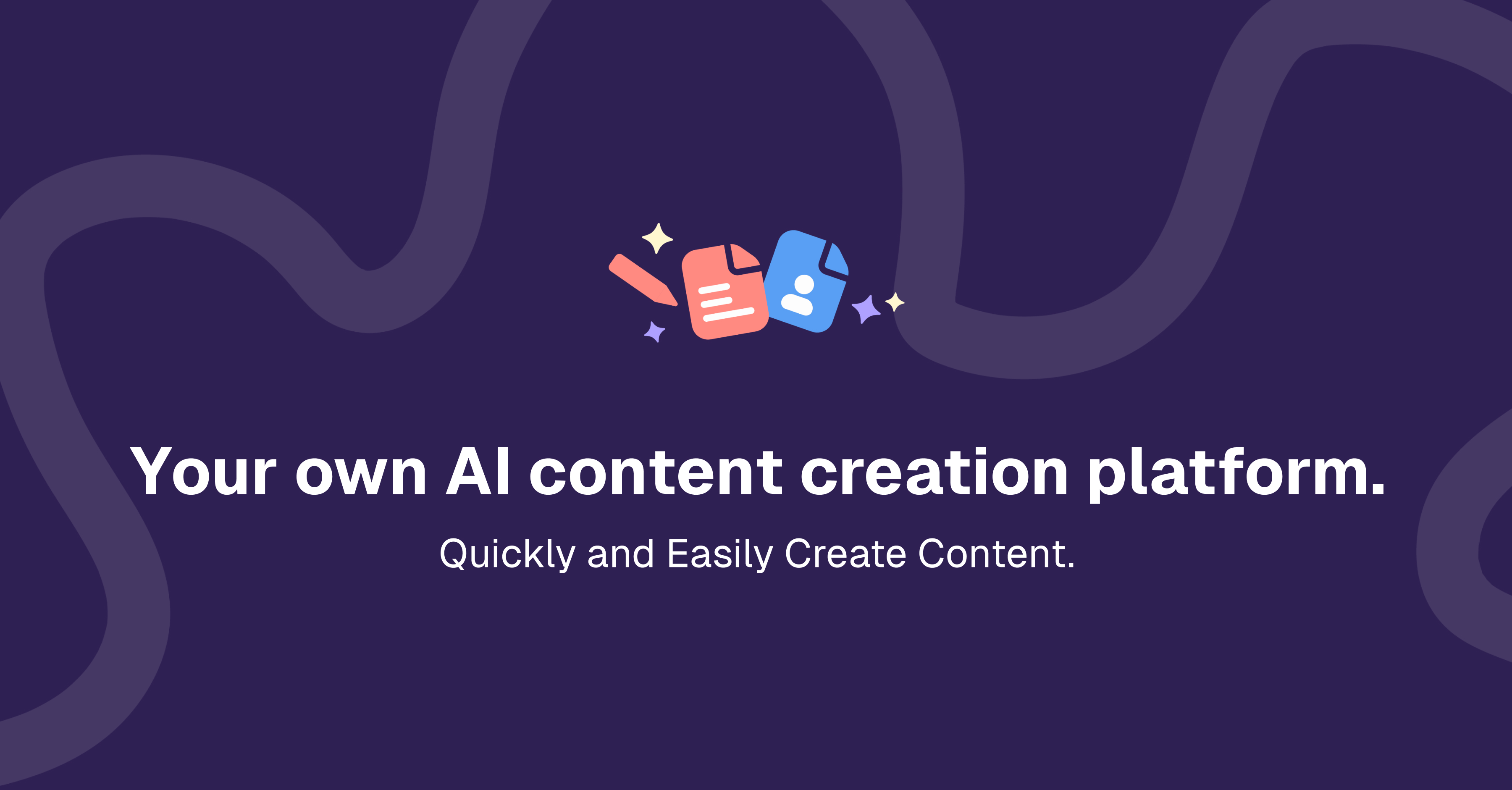How to increase blog and website visitors with AI
Recently, with the advancement of artificial intelligence (AI) technology, major changes are occurring in the operation of blogs and websites. These innovative technologies are opening new horizons in online content creation and marketing strategies, significantly improving competitiveness in the digital space. Getting more visitors and increasing traffic is the main goal of every online content creator. This isn't just about driving numbers; it's essential for reaching more readers, increasing brand awareness, and ultimately improving business performance.
In this article, we'll take a closer look at how to effectively increase traffic to your blog and website using AI, as well as tips and real-world examples. We'll look at how AI is transforming a variety of areas, including content optimization, user experience improvement, and targeted marketing, and how you can leverage it to your advantage.
Content optimization using AI
AI technology has brought major changes to content optimization. You can get help from AI in a variety of areas, including keyword analysis, topic selection, and content structuring. These innovative technologies are opening new horizons in digital marketing and content creation, providing companies and content creators with the opportunity to develop efficient and effective strategies.
1. Keyword optimization
You can use AI tools to find keywords that your potential customers frequently search for. This allows you to perform search engine optimization (SEO) effectively. AI analyzes massive amounts of data to identify current trends and users' search patterns, and recommends the most effective keywords based on this. This goes beyond simply finding keywords with high search volume, and helps discover keywords with actual high conversion rates.
2. Selection of content topic
AI can recommend popular topics through trend analysis and understanding user interests. This will help you create content that will engage your readers. AI collects and analyzes information from a variety of sources, including social media, news articles, and search engine data, to predict topics that are currently trending or likely to become trends in the future. This allows content creators to always produce timely and relevant content.
3. Content Structuring
AI can suggest content structures that are easy to read and optimized for search engines. This helps increase visitor dwell time and improve search rankings. AI presents the optimal content structure by considering both user experience (UX) and search engine algorithms. For example, using appropriate headings, adjusting paragraph length, and using bullet points can improve the readability of your content, while also making it easier for search engines to understand the structure and meaning of your content. This optimization ultimately results in improved overall performance of your website.
Utilizing these AI technologies can take your content marketing strategy to the next level. However, we must not forget that AI is only a tool, and the ultimate creativity and strategy establishment still rests with humans. Through collaboration between AI and humans, we will be able to create more effective and impactful content.
Content creation tool using AI
Promry
AI-based SEO-optimized content creation platform

Playground
AI-based image creation platform

Runway.ai
Multimedia content creation platform such as images and videos

AI-based personalization strategy
Personalized user experience is directly linked to increased visitor traffic. In the modern digital environment, users expect personalized experiences tailored to their needs and preferences. Meeting these expectations has become a key factor in the success of a website or app. A personalization strategy using AI is an effective way to meet these needs, with specific approaches including:
Recommendation system: Using AI algorithms, we precisely analyze users' interests and behavior patterns and recommend optimized content accordingly. This goes beyond simply presenting content and significantly improves the user experience by predicting and providing user tastes and needs. As a result, this significantly increases user dwell time and increases return rates. For example, online shopping malls can increase purchase conversion rates by recommending products that may be of interest to customers based on their past purchase history and search patterns.
Dynamic content: AI adjusts content in real time based on a variety of data, including the user's detailed profile, current location, past browsing history, and time of visit. This approach allows us to provide each visitor with a highly personalized, tailored experience. For example, a news website can greatly increase user satisfaction by adjusting the order and content of articles in real time according to the user's reading habits and interests. Additionally, e-commerce platforms can provide customized discount coupons or special promotions by taking into account the user's purchase history and current trends.
Use of chatbots: AI-based chatbots can greatly improve user experience by immediately responding to various questions from visitors and providing necessary information quickly and accurately. Chatbots that operate 24 hours a day can respond to user inquiries in real time, increasing customer satisfaction and reducing customer service costs. Additionally, chatbots learn from user interactions and can continuously improve service quality. For example, if you need an explanation of a complex financial product or technical support, a chatbot can greatly improve the user experience by accurately understanding the user's question and providing personalized answers.
These AI-powered personalization strategies can help businesses increase customer satisfaction, increase customer loyalty, and ultimately improve business performance. However, when implementing these strategies, it is important to respect user privacy and ensure data security.
Traffic analysis and optimization using AI
AI can be of great help in deeply analyzing and optimizing website traffic. Artificial intelligence technology can quickly process complex data and provide meaningful insights to help website operators make better decisions:
Traffic pattern analysis: AI algorithms analyze visitor behavior patterns, dwell time, bounce rate, etc. to identify problems with the website and suggest improvements. This goes beyond simple statistical analysis and can even predict future traffic trends through machine learning-based prediction models. Additionally, user segmentation can be used to establish customized strategies for each target customer group.
A/B testing automation: Using AI, you can automatically test different versions of web pages and produce optimal results. You can test more variables simultaneously than traditional A/B testing, and by analyzing the results in real time, you can immediately apply the most effective design or content. This helps us continually improve our user experience (UX).
Real-time traffic optimization: AI improves site performance by monitoring traffic conditions in real time, balancing server load or optimizing content delivery. It can respond immediately to sudden traffic increases, and can greatly improve the loading speed and stability of your website through CDN (Content Delivery Network) optimization, dynamic content caching, and intelligent routing.
In addition, AI contributes to website traffic management and optimization in a variety of areas, including providing personalized user experiences, detecting and responding to security threats, and SEO optimization. The use of these AI technologies can lead to improved overall website performance and increased user satisfaction.
Social media strategy using AI
Social media is one of the main sources of website traffic and plays an important role in modern digital marketing strategies. Effective use of social media can greatly help increase brand awareness and attract customers. Recently, social media strategies using artificial intelligence (AI) have been attracting attention, making more sophisticated and effective marketing possible. Key ways to implement an AI-enabled social media strategy include:
Predict the optimal posting time: AI algorithms deeply analyze the activity patterns of your followers and suggest the optimal time to maximize the exposure of your posts. This helps you create customized schedules for each brand and target audience, taking into account user behavior patterns by time of day, day of the week, and even season.
Customized hashtag recommendation: AI continuously analyzes real-time trends and user interests to recommend effective hashtags. This goes a long way in expanding the reach of your content. Additionally, we strengthen your connection with your target audience by creating unique and relevant hashtags that fit your brand personality and campaign goals.
Influencer Analysis: Use AI tools to find influencers who best fit your brand and collaborate with them to effectively increase website traffic. AI suggests the optimal partnership by comprehensively analyzing the influencer's number of followers, participation rate, content style, and past campaign performance. This allows brands to execute more efficient and successful influencer marketing.
In addition, AI supports social media marketing in various areas such as content creation, customer response automation, and performance analysis, allowing companies to more effectively manage online services and increase website traffic.
AI-based advertising optimization
AI can significantly increase the effectiveness of online advertising. Changes are occurring in the online advertising industry due to the advancement of artificial intelligence (AI) technology. AI can dramatically improve the performance of advertising campaigns through data analysis, automation, predictive modeling, and more. Here are some key ways AI is increasing the effectiveness of online advertising.
Target Audience Segmentation: AI analyzes user data to create more sophisticated target audiences. We utilize big data and machine learning algorithms to comprehensively analyze user behavior patterns, interests, and demographic characteristics. This allows advertisers to accurately identify and target the audiences most likely to be interested in their products or services. As a result, your ad exposure becomes more efficient and your conversion rate increases.
Real-time bid optimization: In programmatic advertising, AI adjusts bid prices in real time to maximize ad effectiveness. AI algorithms consider numerous variables to determine the optimal bid price in milliseconds. During this process, historical data, current market conditions, competitors' bidding trends, user profiles, etc. are comprehensively analyzed. This allows advertisers to secure effective advertising exposure positions while reducing unnecessary expenditures.
Creative Optimization: AI tests different ad creatives and automatically selects the most effective version. AI automatically creates and tests combinations of various elements such as images, text, and video to find the optimal creative. By automating A/B testing on a large scale, objective performance analysis based on data becomes possible rather than relying solely on the intuition or experience of human marketers. AI can also create personalized advertising content in real time to deliver optimized messages to each user.
Future outlook and conclusion
Advances in AI technology are expected to provide more opportunities for website and blog operations. However, as large platforms like Google expand AI answers, there are concerns that individual websites may see a decline in traffic.
The following strategies are needed to respond to these changes:
Create high-quality content: Despite advances in AI, the importance of original and valuable content will continue to increase.
Optimize user experience: Use AI to provide personalized experiences and continuously improve the usability of your site.
Multi-channel strategy: It is important to distribute traffic through various channels such as social media, email marketing, partnerships, etc.
Acquire AI technology: Website operators must increase their understanding of AI technology and develop the ability to utilize it effectively.
In conclusion, AI can be a very powerful tool for increasing traffic to your websites and blogs. However, simply introducing technology is not enough. A balanced approach that combines creativity and insight while effectively leveraging AI will be key to success. The ever-changing digital environment requires continuous learning and adaptation, which will allow websites and blogs to grow and develop further.